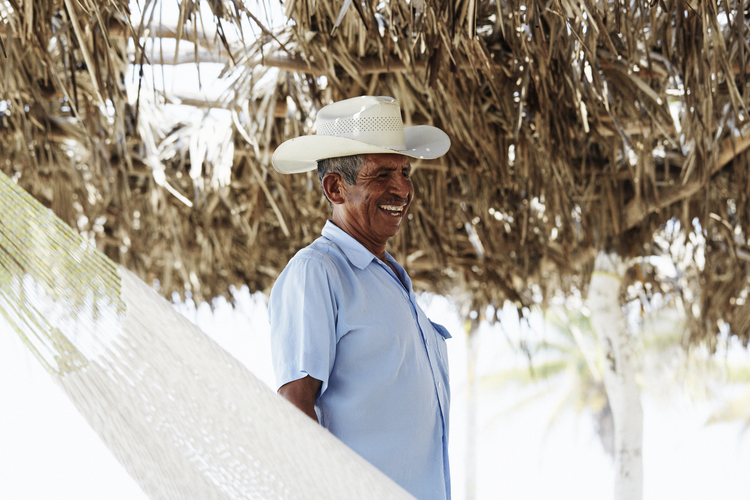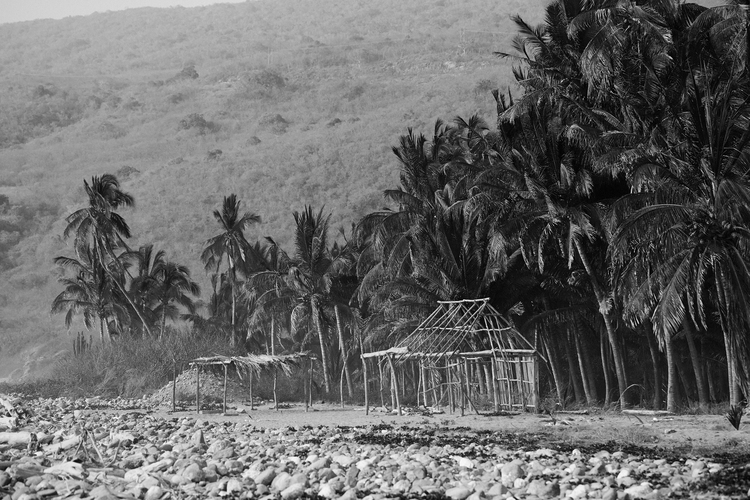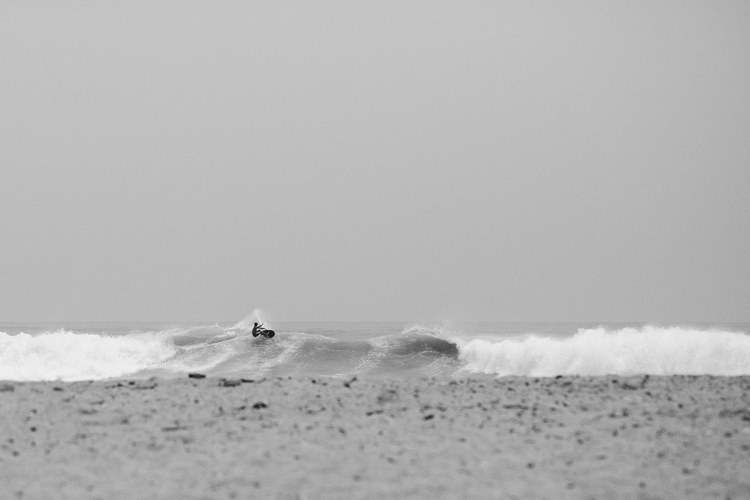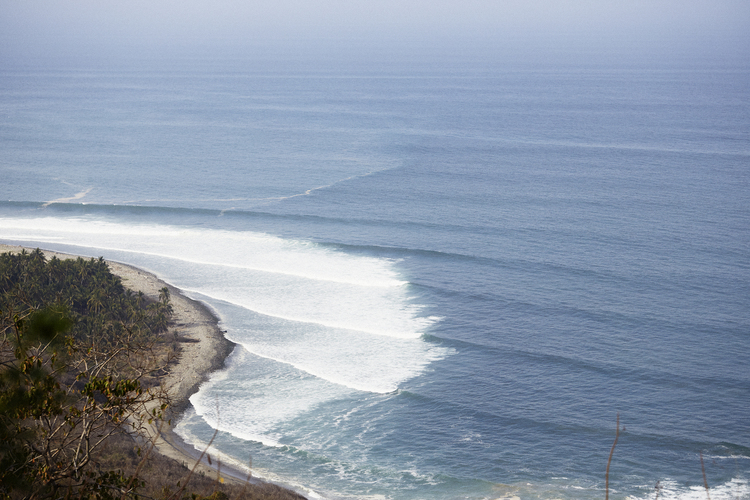Trip Report: Michoacán, Mexico
In the gray and sludge-trodden depths of New York’s winter, a glimmer of hope flashed into a long-quiet Whatsapp thread on my phone: two friends would be available for a surf trip in May.
In the gray and sludge-trodden depths of New York’s winter, a glimmer of hope flashed into a long-quiet Whatsapp thread on my phone: two friends would be available for a surf trip in May.
Such adventures take two forms. The trip is either a strike mission, hastily thrown together in response to a specific swell report, the destination picked for the predicted conditions, or the trip is planned well in advance to coincide with a period of high seasonal average swell at a chosen location. Since two of us were flying from New York and one from London, a strike mission was off the table. Over several days of mutual ridicule, childish name-calling and distracting surf videos, the Whatsapp group weeded out several appealing options including El Salvador, Nicaragua and Costa Rica, leaving Mexico in pole position. Here, the West coast offers virtually guaranteed Pacific swells during Spring. Better yet, the seasonal water temperature is bath-like. Wearing just board shorts and a slathering of sunscreen would make an ideal refreshment from the necessary evil of shimmying into a thick winter wetsuit to surf in the frigid Atlantic. We were sold.
We booked flights to Guadalajara and set about researching local breaks. We learned that many of the most reliable and uncrowded spots are found in Michoacán province to the south. However, almost immediately we ran into a string of warnings from friends both in the US and Mexico telling us the area was not safe to visit.
Further digging led us to Matthew Heineman’s chilling documentary Cartel Land, charting the recent collapse of law and order in parts of Michoacán. The region’s densely forested and steep mountains provide narcos with cover from aerial and ground surveillance by enforcement authorities and the well-paved coastal highway offers a suitably remote artery for high-volume drug trafficking. A picture emerged of Michoacán’s history of violence, kidnappings and murder at the hands of the Knights Templar cartel. Even the seemingly righteous Autodefensas community protection movement in 2013, which somehow overthrew the bloody grip of the narcos, is suspected of being backed by a rival cartel seeking to claim the territory under the guise of community defense.

After we had watched Cartel Land, the Whatsapp chat lit up with articles and reports citing robberies, gruesome violence, kidnappings and a tense, heavy-handed military. Federal and civilian checkpoints would be searching vehicles and bags on local roads, all but looking for reasons to extort bribes. We considered canceling the trip completely.
Desperate to avoid this, we contacted journalists at the Guadalajara Reporter, an English language newspaper in the regional capital, and asked for any insight they could offer into the local conditions. With their generous help, we began to build a more balanced picture. Yes, there had been much violence in the last five years, but most of it had subsided. The real fight was between the cartels and the military. Local communities were wary but not hostile towards travelers looking for a place to stay or food to eat and many of the checkpoints were now either unmanned or more relaxed. Visiting Michoacán as surf tourists would probably be little more dangerous than the surfing we intended to do when we got there.
We satisfied ourselves that we should be fine as long as we limited our travel by road to daylight hours, used federal and state highways where possible, and generally kept our wits about us. We settled on a village close to a peeling left point at a rivermouth as the base for our trip.
After weeks of ernest research, horror stories and poor-taste jokes, the Whatsapp chat subsided to a sparse rhythm of pre-trip banalities. What kind of sunscreen should we bring? How few pairs of boxer shorts should be packed for a two-week trip which could be conducted in a single pair of boardshorts?
Finally, we landed in Guadalajara and picked a line for the Michoacán coast. We paused to take in views of the vast, dry lake Sayula, patrolled aimlessly by swirling columns of dust. We stopped again in Tecomán to gorge on our first seafood ‘sopa’ of the trip. After eating, we drove due West to lay eyes on Boca de Pascuales. ‘Pascuales’, as it’s known, is a famously heavy, shifting beach break. Visiting surfers are warned to bring several spare boards – it’s more a case of when than if. The wave looked messy, huge and seriously uninviting from the safety of an elevated platform standing over the burning hot sand on the beach. We climbed back into the car for the final hour of our drive into Northern Michoacán.
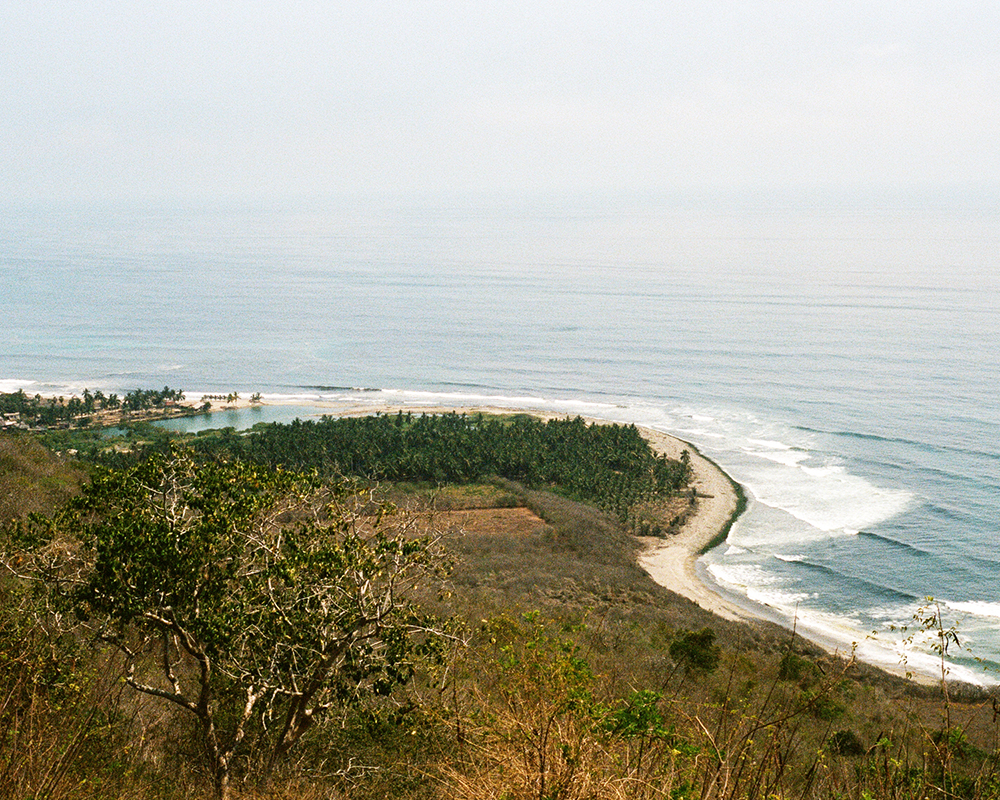
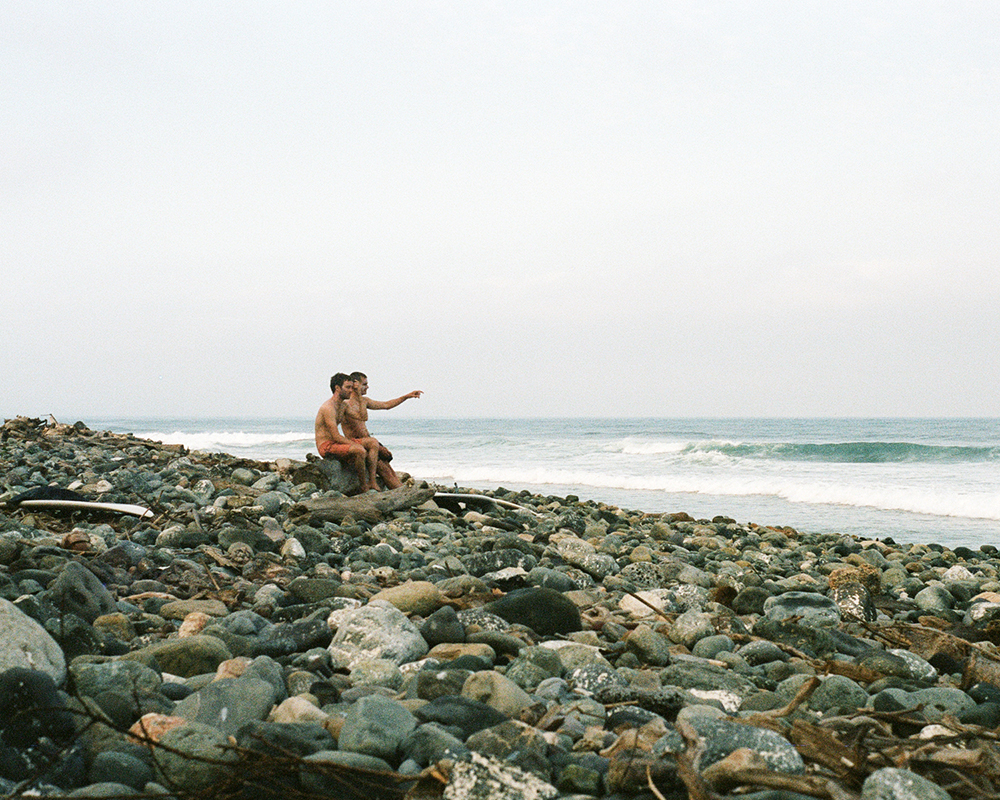
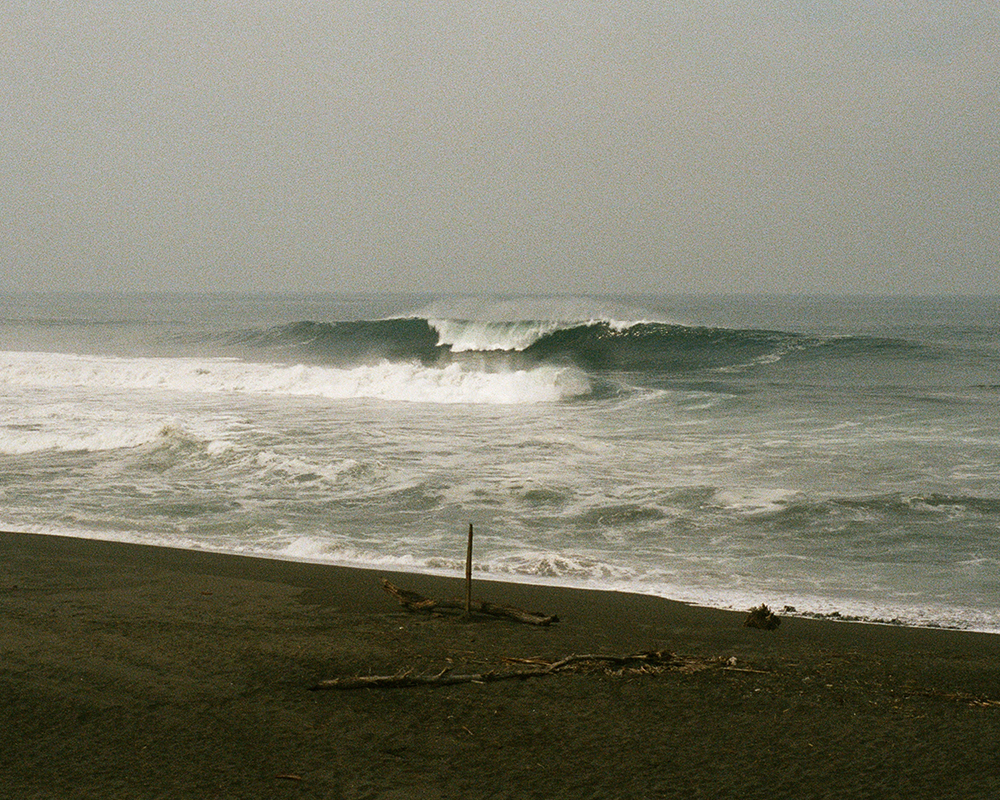
We arrived at the village where we planned to stay, just South of the mouth of the Ostula river. It’s a small community, only three by six blocks, with a leafy town square and well-paved roads sloping down towards the Pacific. At the bottom of the hill, set back from the beach is a simple, community owned and operated tourist resort. The buildings are constructed to evoke the traditional cabaña style with plam-wood beams and thatched roofs woven with palm fronds. The resort includes an open-framed circular restaurant with panoramic views of the ocean, basic bathrooms and showers and a campground dotted with giant cactus plants.
We checked into a cabaña with a shaded balcony overlooking the turquoise Pacific. The surf report had correctly predicted the last shreds of a previous swell would linger long enough for a shoulder-high evening session to wash away the sweat and dust of the road. A fresh pulse swung into the coast the next morning.
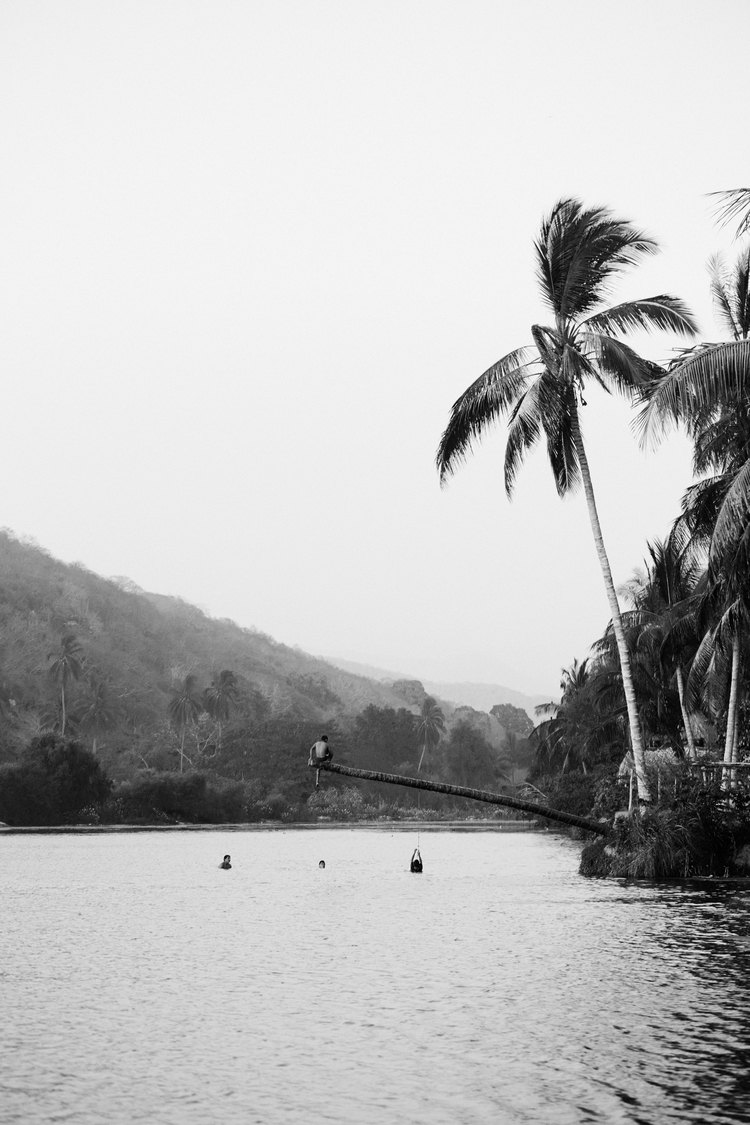
As the sun began to climb in the sky, we waited in the shade of our cabaña for the ‘morning sickness’ in the water to pass as the light wind turned offshore. Once the wave settled, we walked towards the point, first across a river mouth, then by picking our way over warm, round rocks and through a dense palm forest. The green canopy rustled in the breeze and the cool, spongy forest floor was littered with fallen coconuts, opened at the top and relieved of their milk by local boys with machetes. We startled a nervous donkey tied to a wooden fence at the edge of the forest, setting the creature off on a prolonged bray that echoed up the river valley.
We emerged on the rocky beach and dropped off drinking water and something to eat after the session. We figured our way out into the water over seaweed-slippery stones and a perimeter of Pacific sea-urchins lurking invisibly in crevices between the rocks. We paddled to the peak and found it lined up with a huge cactus growing on the beach in front of the jungle. Then, we surfed in glassy, peeling perfection until the sun had become so hot and high in the grey-blue above that the water offered no respite.
After our session, we wandered up the hill into the village and found a tiny street restaurant serving mouth-watering carne asada tacos which we supplemented with cold beer and avocados from the local store. Despite forewarnings of an uneasy peace, we found the village friendly and open. Conversations with strangers in the restaurants, on the streets, and on the beach were common. We learned that this restaurant, like the others in town, only opened for two nights a week. In doing so, it ensures that other families in the town get an opportunity to share the custom of any visitors passing through. In fact, it is in this spirit that the whole community operates.
The surf lived up to the forecast, delivering sizeable waves that peeled down the left point all week, (the longer rides, we joked, taking you all the way back to Tecomán). Though we weren’t the only surfers around, for much of the time we had the main peak to ourselves. At the weekend, a few groups of Guadalajaran surfers appeared, having made the long drive from the city on Friday night for a couple of days in the ocean before returning to work. The peak never felt crowded and for the evening sessions when the wind was onshore, a punchy righthander worked on the South side of the river mouth, though what it lacked in crevice-creeping urchins it made up for with a powerful current and a vast tree trunk which floated in the shallows for several days, uncertain whether to make landfall or continue teasing surfers with its perilous tangle of roots.
All in all we scored, the taste of fresh avocados and cold cervezas so much the sweeter for the trip nearly having fallen apart. Though we saw a few beach patrols of heavily armed military and indeed had to roll cautiously through a number of checkpoints, the vibe was mellow. The local community has evidently put up with much misery because of the insatiable American appetite for drugs and an underfunded, often corrupt Mexican government. This dark history did little to overshadow the sense of community and local hospitality. Michoacán’s coastal villages are open for business, if you choose to bring it.
Ed Thompson lives in New York and is currently documenting the local surf culture for his Spring 2018 book, Ice Cream Headaches.
Photography by Julien Roubinet and Ed Thompson
Related Stories

Order our “On Surfing” book today.
Buy Now


